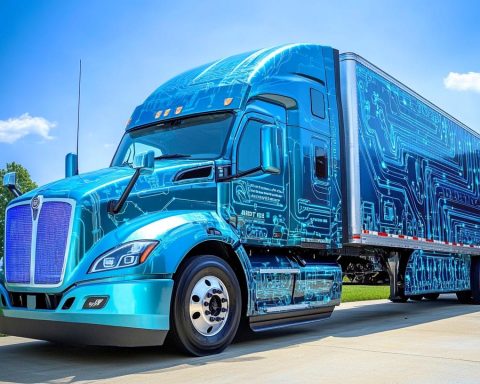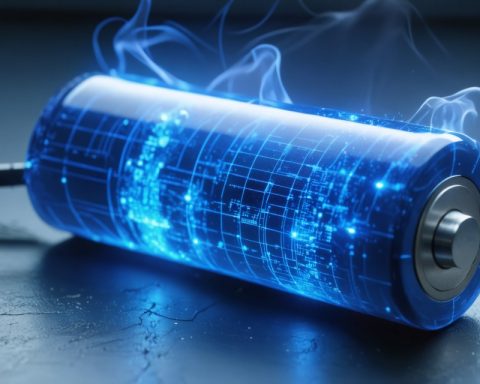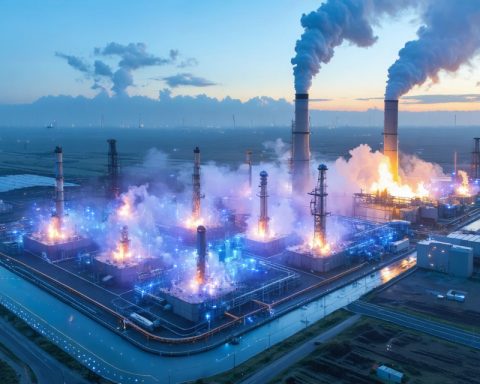- Hydrogen emerges as a pivotal element in the quest for sustainable energy, offering versatile applications from vehicles to clean power generation.
- In Iceland, renewable energy powers electrolysis plants to produce hydrogen without carbon emissions, exemplifying a sustainable model for the world.
- Hydrogen fuel-cell vehicles and trains, emitting only water vapor, demonstrate hydrogen’s potential to revolutionize transportation with zero pollution.
- Challenges such as scaling infrastructure and improving production efficiencies must be addressed to achieve widespread hydrogen adoption.
- Hydrogen’s adaptability extends its use beyond transport to industries like energy storage and home heating, contributing to net-zero emissions goals.
- Hydrogen represents a transformative solution for reducing pollution, offering a pathway to cleaner air, clearer skies, and unbounded energy.
Hovering silently above the horizon of innovation, hydrogen emerges as a beacon of hope in our quest for a sustainable future. It is the most abundant element in the universe, yet its potential to revolutionize our world is only beginning to unfold here on Earth. Imagine a gas so powerful that it fuels the most explosive reactions, yet so versatile that it can seamlessly integrate into everyday life, from vehicles whispering along roads to entire cities dazzling with clean energy. This is the promise of hydrogen.
Consider the serene landscape of Iceland, where geothermal energy hisses from the earth’s depths. It’s here that hydrogen reveals its dazzling potential. By harnessing renewable sources, Iceland powers electrolysis plants that split water molecules, producing hydrogen without carbon emissions. This hydrogen not only helps power local transport but sets a breathtaking example for the world.
As you picture this transformation, envision hydrogen fuel-cell vehicles gliding silently down European highways or Japanese trains humming their way across the countryside. Unlike conventional engines that guzzle fossil fuels, these marvels emit nothing but water vapor. Hydrogen, in its elemental grace, turns the wheels of industry with zero pollution.
Yet, the journey to a hydrogen-powered world isn’t without its challenges. Infrastructure must scale, and production efficiencies need honing. As experts continually refine technologies, the ballasts tied to hydrogen’s ascent are being cut loose, paving the way for widespread adoption.
What makes hydrogen’s march invigorating is its inherent adaptability. Beyond transport, think of factories, energy storage, home heating—the pervasive reach of hydrogen energy solutions. This golden gas may well forge the path to net-zero global emissions, setting the stage for a cleaner, greener world.
What does this mean for us? It indicates a future less shackled by pollution and climate woes, offering a planet where the air is cleaner, skies clearer, and the possibilities endless. In a world hungering for change, hydrogen isn’t just a solution; it’s the horizon—a shimmering gateway to sustainable tomorrow.
The takeaway for a curious mind seeking the shape of things to come is clear: Hydrogen holds the key to breaking free from the clutches of fossil fuels. With each technological leap, it drives us closer to an era where energy is as boundless and clean as the stars themselves. Embrace this journey, because hydrogen promises a revolution we cannot afford to ignore.
The Hydrogen Revolution: Fueling the Future with Clean Energy
Exploring the Potential of Hydrogen: Innovations and Challenges
Hydrogen, the universe’s most abundant element, plays a critical role in the transition to a sustainable energy future. As a potent energy carrier, hydrogen offers a pathway to drastically reduce carbon emissions across various sectors. Recognized for its versatility and clean energy potential, hydrogen is gaining momentum as a crucial player in the global shift away from fossil fuels.
How Hydrogen Works: From Production to Power
1. Production Methods: Hydrogen can be produced through several methods, including steam methane reforming, partial oxidation of hydrocarbons, and electrolysis, which uses electricity to split water into hydrogen and oxygen. Electrolysis is preferred in a renewable energy context because it produces no greenhouse gases when powered by renewable sources.
2. Fuel Cells: Hydrogen fuel cells convert hydrogen into electricity. These cells operate by combining hydrogen and oxygen atoms, producing electricity, water, and heat. Fuel cells are pivotal in powering vehicles, providing stationary power to buildings, and serving as backup power systems.
3. Hydrogen Storage and Distribution: Despite its potential, effective hydrogen storage and distribution remain challenging. Hydrogen must be compressed or liquefied for transportation, requiring advanced infrastructure and innovations in storage technology.
Market Forecasts & Industry Trends
– Global Market Growth: The global hydrogen market is projected to reach approximately $201 billion by 2025, driven by increased demand for sustainable energy solutions (Allied Market Research).
– Geographical Hotspots: Countries like Germany, Japan, and South Korea are investing heavily in hydrogen infrastructure. Japan, for example, aims to create a “hydrogen society” by utilizing hydrogen across transportation, industry, and energy sectors.
– Hydrogen Hubs and Projects: Numerous projects are underway globally to establish hydrogen hubs—integrated networks of production, storage, and utilization facilities. Notable initiatives include the European Hydrogen Backbone project and Australia’s Hydrogen Roadmap.
Real-World Use Cases
– Transportation: Hydrogen fuel-cell vehicles (FCEVs) offer zero emissions, making them ideal for decarbonizing the transport sector. Major automotive manufacturers like Toyota and Hyundai are advancing FCEV technology.
– Industrial Applications: Hydrogen is used in refining, ammonia production, and steel manufacturing, where its adoption can significantly curb emissions.
– Energy Storage: As a clean storage medium, hydrogen can balance intermittent renewable energy sources like wind and solar, providing grid stability and backup power.
Controversies & Limitations
– Energy Efficiency: Critics argue hydrogen production via electrolysis is less efficient compared to direct electrification methods. Technological advancements are needed to improve conversion efficiencies.
– Cost Implications: Current hydrogen production and infrastructure setup can be costly, posing a barrier to widespread adoption. However, costs are expected to decrease as technology matures and scales up.
– Safety Concerns: Hydrogen is highly flammable, necessitating stringent safety protocols. Advances in leak detection and pressure management are critical for safe handling.
Actionable Recommendations
– Leverage Public Incentives: Governments worldwide are offering incentives for hydrogen projects. Businesses and consumers should explore grants, tax benefits, and subsidies to offset initial costs.
– Invest in Technology: Keep abreast of technological advancements in hydrogen production, storage, and fuel cell technologies to leverage new opportunities as they arise.
– Educate and Advocate: Spread awareness about hydrogen’s potential and safety measures to drive public and industry support.
Hydrogen is a beacon of promise in our quest for sustainable energy solutions. By harnessing its potential, we can significantly reduce our environmental footprint, fostering a cleaner and greener future.
For further reading, visit the Energy Department’s Hydrogen and Fuel Cell Technologies Office.















